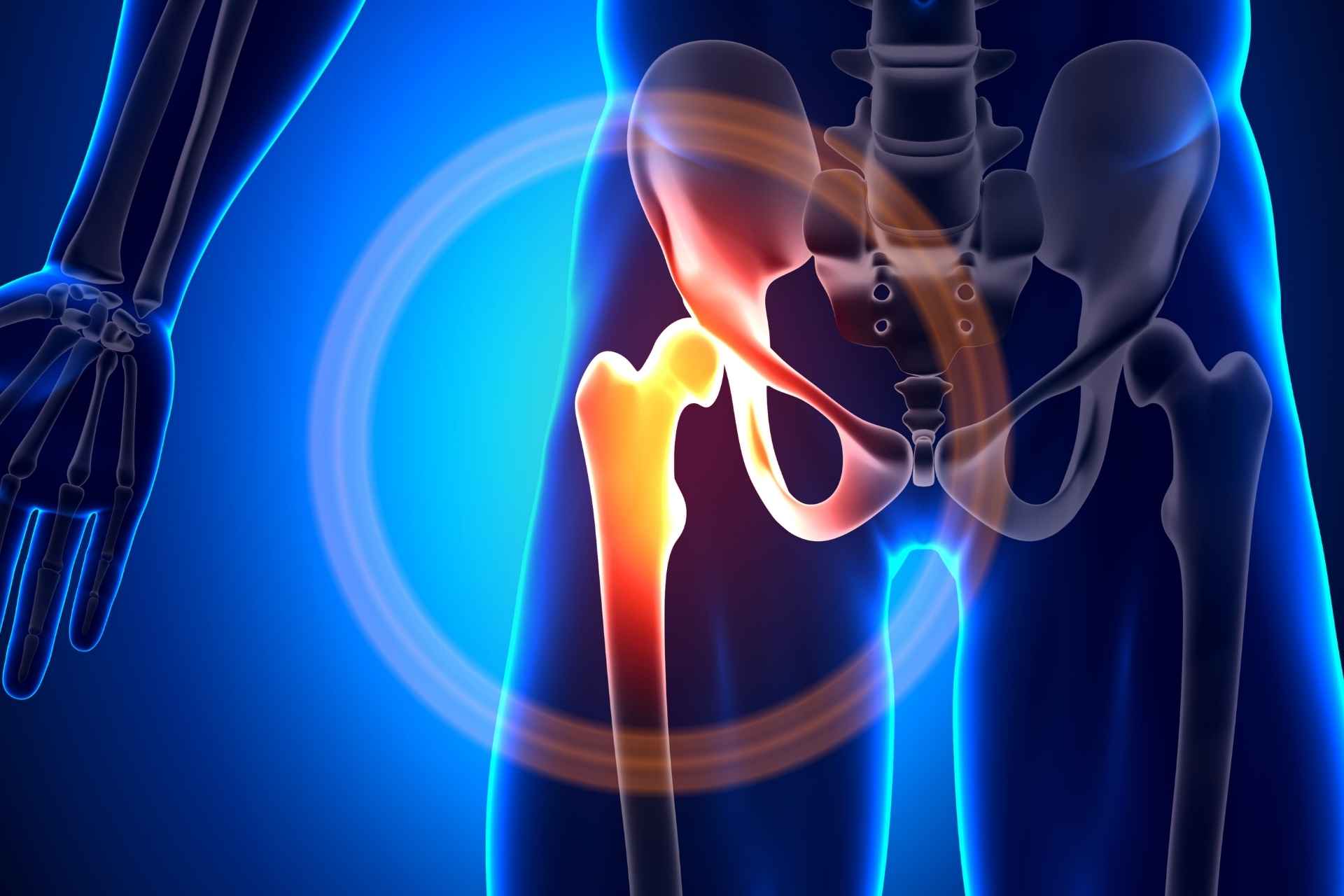What is already known on this topic
The death of bone tissue due to a lack of blood supply, or osteonecrosis, is typically associated with long-term use of steroid hormones. Osteonecrosis of the femoral head affects the highest part of the thigh bone and commonly occurs after therapy with glucocorticoids, a class of steroid hormones that are used to fight inflammation. The composition of the gut microbiota can be altered by glucocorticoids, but it’s unclear whether the gut microbiota is involved in the development of glucocorticoid-induced osteonecrosis of the femoral head.
What this research adds
Working in mice, researchers found that cohousing with healthy mice or colonization with their gut microbes protects the femoral head from osteonecrosis in rodents treated with glucocorticoids. These beneficial effects result from the rescue of the loss of Lactobacillus animalis induced by the hormones. Transferring L. animalis into the gut of mice treated with glucocorticoids protected the animals against osteonecrosis — likely through the action of tiny extracellular vesicles produced by L. animalis, which can enter the femoral head to promote the formation of new blood vessels and bones as well as prevent programmed cell death.
Conclusions
The findings suggest that the gut microbiota protects the femoral head through the production of extracellular vesicles, and that the loss of L. animalis is associated with the development of glucocorticoid-induced osteonecrosis of the femoral head.
The death of bone tissue due to a lack of blood supply, or osteonecrosis, is typically associated with long-term use of steroid hormones. Now, researchers have found that specific gut bacteria may protect the thigh bone from death induced by a class of steroid hormones.
The findings, published in Science Advances, suggest that the bacteria exert their beneficial effects through the production of tiny extracellular vesicles. They also indicate that the loss of a specific microbe called Lactobacillus animalis is associated with the development of steroid-induced osteonecrosis of the femoral head — the highest part of the thigh bone.
Osteonecrosis of the femoral head commonly occurs after therapy with glucocorticoids, a class of steroid hormones that are used to fight inflammation. Scientists have known that glucocorticoids can alter the composition of the gut microbiota, and the mouth microbiota of people with osteonecrosis of the jaw is different from that of healthy people. However, it’s unclear whether the gut microbiota is involved in the development of glucocorticoid-induced osteonecrosis of the femoral head.
To fill this knowledge gap, researchers led by Hiu Xie at Xiangya Hospital studied mice receiving methylprednisolone, a synthetic glucocorticoid that is typically prescribed for chronic illnesses in people.
Bone protection
Since mice eat each other’s feces, they may transfer gut microbes to their cage-mates. So, the researchers cohoused mice receiving methylprednisolone with healthy mice. As expected, treatment with methylprednisolone caused osteonecrotic lesions and bone loss in the femoral heads of mice. However, cohousing with healthy mice protected the animals from osteonecrosis of the femoral head, the researchers found.
The team observed similar results when they administered gut microbes from healthy mice to methylprednisolone-treated mice once a week for 6 weeks. The treated mice showed increased blood vessels and osteoblasts, which are specialized cells involved in bone formation. The mice also had fewer cells undergoing programmed cell death compared with rodents that did not receive the gut microbes from healthy mice.
An analysis of stool samples from control mice and methylprednisolone-treated mice showed that treatment with methylprednisolone led to a reduction in the abundance of Lactobacillus bacteria. In particular, L. animalis and L. intestinalis were reduced in the fecal microbiota of methylprednisolone-treated mice compared to controls. The levels of L. animalis remained low until up to three weeks after treatment with methylprednisolone, the researchers found.
Beneficial microbe
Giving L. animalis to methylprednisolone-treated mice once a week for 6 weeks protected the rodents from glucocorticoid-induced osteonecrosis of the femoral head. Mice treated with L. animalis had milder damage to their femoral heads compared with those receiving methylprednisolone only. L. animalis also rescued the reduction of blood vessels and osteoblasts observed in methylprednisolone-treated mice, and it suppressed programmed cell death in the femoral heads of the animals.
Further experiments showed that L. animalis produces extracellular vesicles that can enter the femoral head to promote the formation of new blood vessels and bones as well as prevent programmed cell death. Extracellular vesicles are tiny membrane-enclosed sacs that are produced by most cells and play crucial roles in intracellular communication. These vesicles typically transfer bioactive molecules produced by the donor cell to a recipient cell.
L. animalis has been found in both human and animal milk, which suggests that this bacterium is safe to consume and may contribute to the beneficial effects of milk consumption on bone health, the researchers say. “In future studies, it will be worthwhile to determine whether L. animalis can be used as a probiotic bacterium for preventing [glucocorticoid]-induced [osteonecrosis of the femoral head] in humans.”











